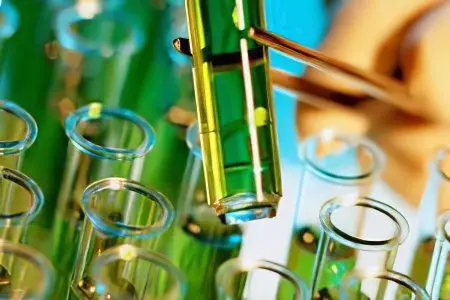
For one reason or another, each person sometimes has to take a urine test – an aqueous solution of electrolytes and organic substances. It contains 92-99% water and many different components. But maybe not everyone knows exactly what parameters doctors determine when examining this fluid. Basically, every day with urine, the body gets rid of approximately 50 – 70 dry substances, including urea and sodium chloride. The composition of urine can change under certain conditions and proteins can be detected in it.
Proteins are involved in the life processes of cells, with their help cell structures are formed. Normally, they should not be in the urine, sometimes traces of protein are determined. Urine is formed in the nephron of the kidney, where the blood is filtered from toxic substances formed by drugs or metabolic products. Kidney “filters” pass molecules with a low molecular weight through themselves, and due to the fact that proteins have a large mass, they cannot penetrate into the urine through filters.
As soon as albumin proteins, alpha, beta and gamma globulins appear in the urine, this means that kidney function is impaired or kidney tissue is affected. In adolescents, the excretion of protein in the urine (proteinuria) is observed in diseases of the kidneys, disorders of the endocrine system, malignant neoplasms, and any inflammatory processes in the body. Proteinuria in terms of the amount of protein released can be:
moderate with a value of up to 1 g of protein per day;
medium – from 1 to 3 g of protein per day;
Expressed (severe) – more than 3 g of protein per day;
Physiological proteinuria is isolated, which does not have a negative effect on the body of a teenager. It appears during a period of intensive growth, during physical exertion, stress, due to infectious diseases and disappears as soon as it passes, for example, fever, or during a period of lack of physical activity. A general urine test should be done at any age, especially for children and adolescents during the period of routine vaccinations or after various colds.
If a protein is found in the urine of a teenager, this can be a signal of serious problems, to eliminate which it is necessary to consult a doctor and prescribe medications after the main diagnosis has been clarified. With teenage proteinuria, the disease that caused the increase in protein is treated. Antibacterial agents, cytostatics, glucocorticosteroids, etc. are used. If protein is found in the urine during the acute period of inflammation of the urological organs, then the complex of treatment includes adherence to bed rest, which helps prevent the formation of a chronic form.
Proteinuria in teenagers
Increased protein in the urine or proteinuria can be false and true. With true proteinuria, for example, urological ailments are detected, manifested by bone pain, fatigue, loss of appetite, dizziness, chills with fever, anemia, vomiting or nausea.
Urinalysis is very important, and if it contains an increased protein content, this can be a sign of kidney disease, diabetes, leukemia. Basically, an overestimated protein indicator warns of possible various forms of nephritis. Adolescent boys may develop a protein triggered by kidney disease, hemolytic anemia, muscular system disease, cardiovascular insufficiency, oncological diseases, and lesions of the genitourinary organs.
Orthostatic proteinuria in adolescents does not require special treatment, because it occurs with a long stay in an upright position, which leads to impaired renal hemodynamic function. This condition is absolutely harmless, so it is not necessary to prohibit adolescents from leading an active lifestyle, physical activity does not harm the kidneys, but only contributes to the appearance of a small amount of protein in the urine.
If the doctor prescribes repeated tests, then they must be taken in order to control possible changes in the amount of protein in the urine. Often, a low-salt diet is prescribed to reduce the level of protein in the urine. In rare cases, they resort to the use of special drugs.
Today, in laboratory studies of urine, a qualitative reaction method is used that does not detect protein in the urine of a healthy person. If this method detects protein in the urine, then a quantitative determination of the protein is carried out. As a preventive measure for increasing protein in the urine of a teenager, a diet is prescribed that involves good nutrition, alternating vegetable and protein foods, because, as you know, one of the reasons for the high level of protein in the urine is excessive consumption of meat, eggs and raw milk.
With a high protein, for example, due to pyelonephritis, antibiotics, sulfonamides, nitrofurans, nitroxoline are used. The choice of funds, the duration of treatment, the doctor determines depending on the individual characteristics of the patient. The effectiveness of treatment increases with the systematic monitoring of the condition of a teenager. This avoids consequences and increases the chances of recovery.









